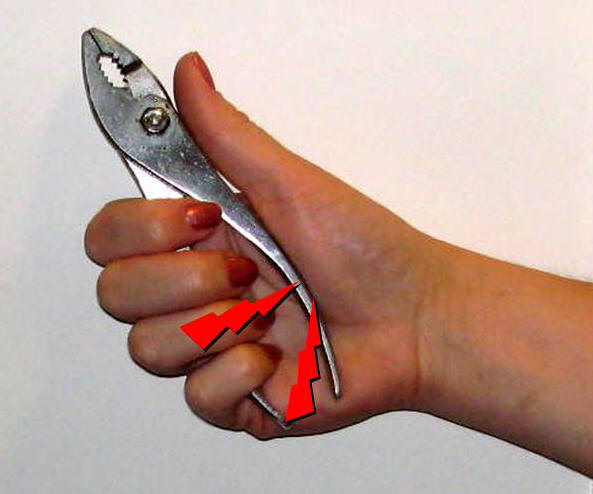 |
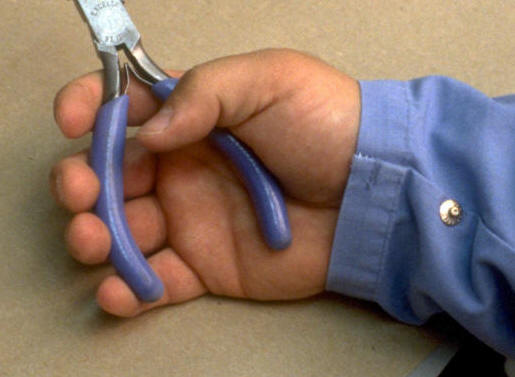 |
| Hard edge | Cushioned |
Direct pressure or “contact stress” refers to on-going contact between a part of the body and a hard edge or surface. This issue is common with many tools and tasks.
Production issues
Almost everyone has squeezed onto a pliers with hard edges and has had to stop because of the discomfort and pain. Similarly, pressure points of any type can interfere with production.
Employee well-being
In addition to being uncomfortable, pressure points can inhibit nerve function and blood flow, potentially leading to permanent injury. For example, the hand is particularly sensitive because of (a) the large number of nerves throughout the hand and fingers that are typical points of contact, and (b) the blood vessels in the fleshy part of the palm that handles normally press against.
Strategies for improvement
Contour and cushion
Whole hand loops
Good seating
Edge cushioning
Floor cushioning
Personal protective equipment
Contour and cushion
Many tools and pieces of equipment can be improved with these techniques:
- Contour the item to fit the shape of the body.
- Provide padding to soften the pressure.
- Distribute the pressure over a larger surface area.
The photos at the top of the page provide a good example for hand tools. Below is an example of a quick fix by wrapping the handle of a heavy cart with tape.
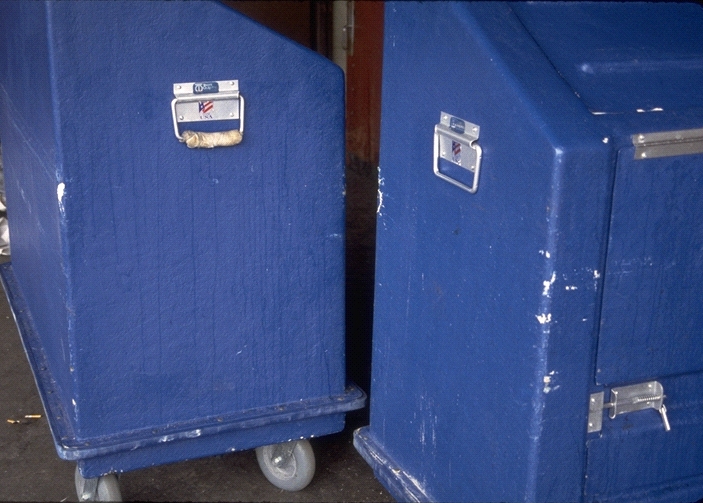 |
| Quick fix: Wrap thin metal handle with tape |
Use whole hand loops
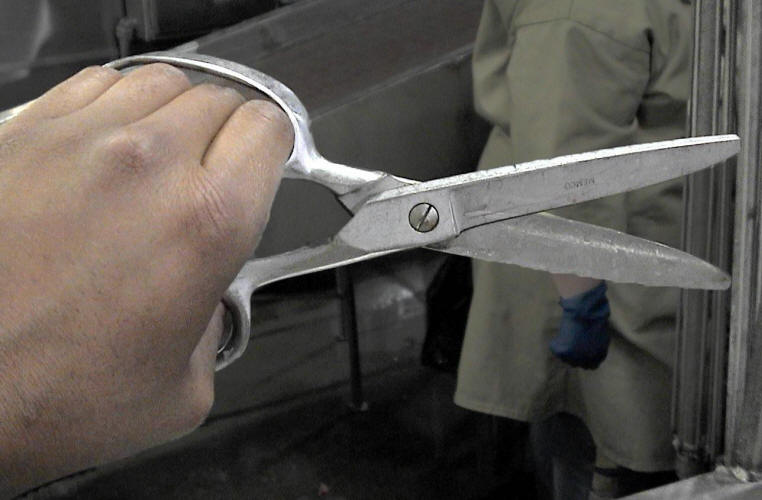 |
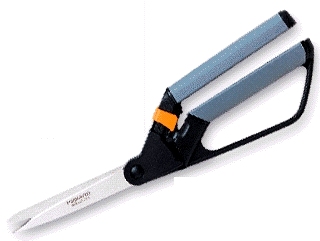 |
| Finger loops | Full hand loop |
When scissors and similar tools are used for long periods, finger loops can rub against the fingers, which can lead to injury to the nerves. Full hand loops help prevent this problem. (The full hand loop also enables more hand and forearm muscles to be brought into play, which provides more strength to do the job.)
Provide good seating
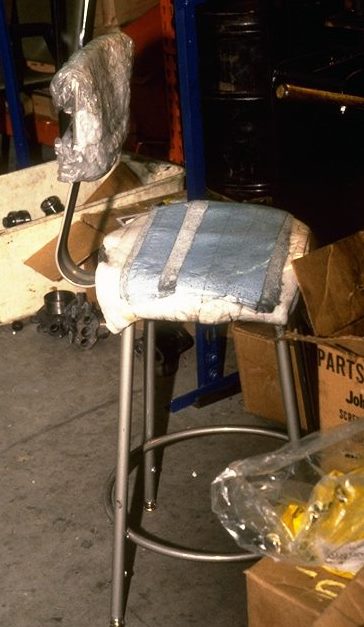 |
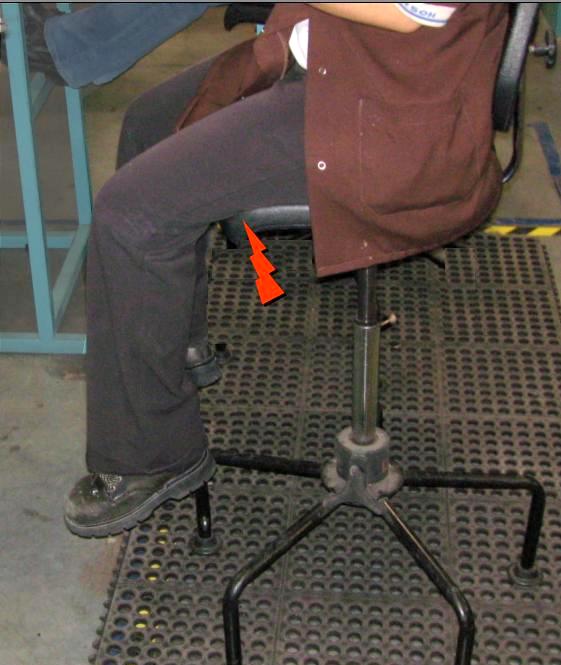 |
| Makeshift attempt for cushioning | Behind the knees: particularly sensitive |
Contact stress from sitting on hard surfaces is something from pressure points, lessened with cushioning and contouring. Proper seat height greatly affects pressure points on the legs. If the seat is too high and the legs dangle, the pressure behind the knee can be excessive. If the seat is too low, the weight of the body concentrates on the buttocks, again creating discomfort. See workstations: Seating
Provide edge cushioning
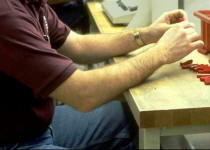 |
 |
| Before | After |
A common example of contact stress is having to lean your forearm on a hard edge. Good improvements are to add padding and/or round out the edge. See workstations: Arm supports
 |
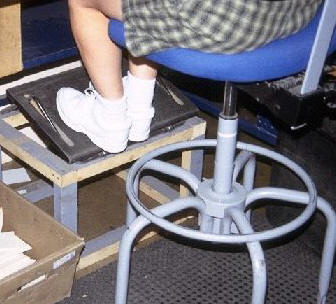 |
| OK: Rail | Good: Flat |
Foot rings and rails are common on stools and workstations and provide benefits in several ways. However, the narrow dimension of a ring or rail can create a pressure point on the bottom of the foot. It is better to use a flat surface. See workstations: Footrests
Provide floor cushioning
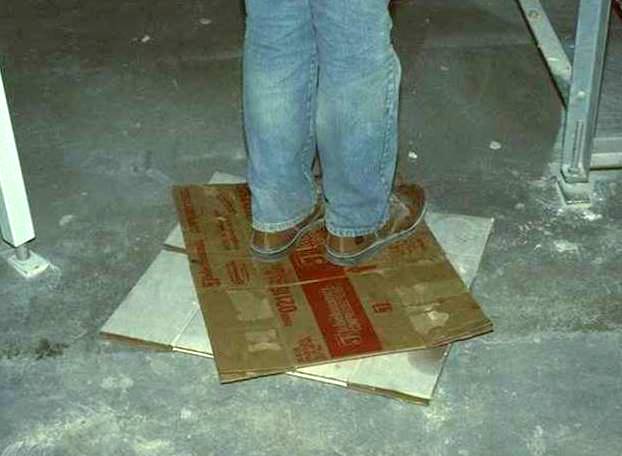 |
 |
| Makeshift mat | Good: Long runner |
Standing for long periods of time on hard surfaces (especially concrete floors) can damage tissue in the heels, contribute to other leg disorders, and increase fatigue. Options include:
- Anti fatigue mats are the usual choice in production facilities where employees stand at a single workstation. A variety of types are available for an assortment of conditions, ranging from oily areas in machine shops to clean room conditions in pharmaceutical labs.
- Wood or plastic decking can be placed over a concrete floor to overcome the mass and density of concrete and provide resiliency. One advantage of decking compared to mats is compatibility with wheeled carts. Fiberglass grating can be similarly used in chemical and wet environments.
- Cushioned insoles or heel cups for mobile staff such as maintenance, engineers, and supervisors, where mats are not feasible. Viscoelastic, shock-absorbing materials typically work best.
See Workstations: Flooring and Personal Equipment: Insoles
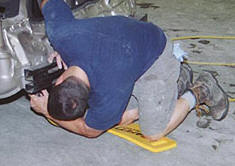 |
| Kneeling pad |
Portable pads for kneeling are inexpensive and commonly used.
Personal protective equipment
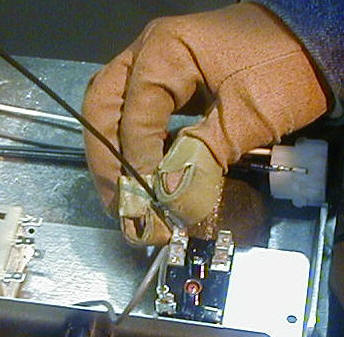 |
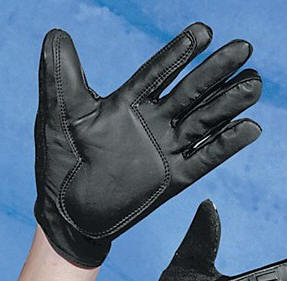 |
|
| Knee pads | Finger wraps | Padded gloves |
In general, it is best to make engineering changes to equipment rather than add protective equipment to people. However, there are circumstances where personal equipment is the only option.
The examples above show knee pads for kneeling, finger wraps for inserting sharp-edged electrical leads, and padded gloves when it is necessary to use the palm of the hand as a hammer (a poor practice, but sometimes unavoidable).
